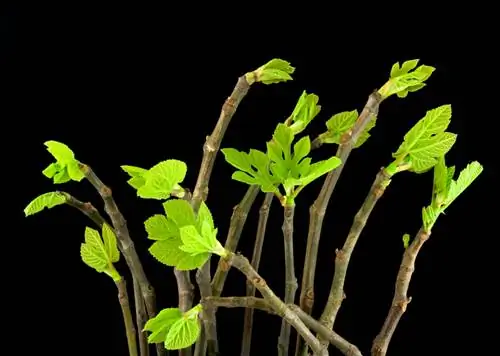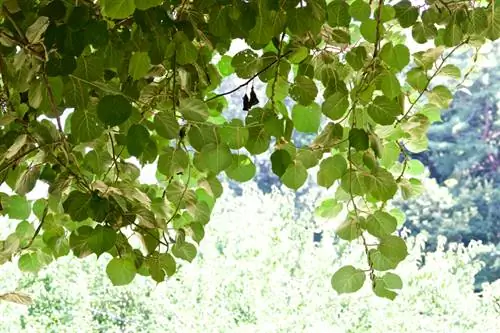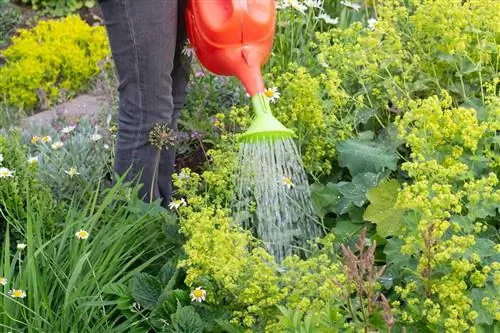- Author admin [email protected].
- Public 2023-12-16 16:46.
- Last modified 2025-01-23 11:21.
Most trees bloom - often annually, but some only every few years. After fertilization, these flowers develop into fruits that are used for reproduction. However, some trees never seem to set fruit, even though they bloom constantly. Why is that?

Why does a tree sometimes not bear fruit?
A tree cannot bear fruit if it is purely male or dependent on cross-pollination and has no suitable pollinator nearby. In such cases, there is no fertilization and therefore no fruit development.
Is there a tree that does not produce fruit?
The reason why some trees produce fruit and some do not is due to their gender. The gender division in the plant kingdom is comparatively complicated:
- Some trees have flowers with both male and female sexual characteristics.
- Others bear both all-male and all-female flowers at the same time.
- A third group is clearly divided into purely male and purely female trees.
What does this have to do with the formation of fruits? It's simple: purely male trees bloom, but never produce fruit. In addition, many bisexual trees are dependent on cross-pollination, i.e. H. They need another tree of the same species in the immediate vicinity so that their own flowers can be fertilized and fruit can develop from them. This knowledge is immensely important in fruit cultivation, for example - without suitable pollinator varieties there are usually no apples, pears or cherries.
Monoeciousness / dioeciousness
In botany, the different plant sexes are referred to as “monoecious” or “dioecious”. Monoecious trees bloom with both male and female flowers, while dioecious trees only have male or female flowers. So there are “male” and “female” trees that have to be planted together in order to develop fruit. On the other hand, if there is only one male tree (or even just one female tree with no male counterpart anywhere) in the garden, no fertilization takes place - and therefore there are no fruits.
Examples of dioecious trees
The following tree species are typical representatives of dioeciousness, although there can sometimes also be individual monoecious examples - for example the yew. Other trees can change gender as needed, such as the ash tree (Fraxinus excelsior). All species listed are suitable for cultivation in Central European gardens.
- Ash maple (Acer negundo)
- God's Tree (Ailanthus altissima)
- Andean fir / Araucaria (Araucaria araucana)
- Ginkgo (Ginkgo biloba)
- Sea buckthorn (Hippophae rhamnoides)
- Holly (Ilex aquifolium)
- Juniper (Juniperus communis)
- Yew (Taxus baccata)
- Cake tree (Cercidiphyllum japonicum)
Tip
In particular, many types of pome fruit such as apples and pears are rarely self-fertile, but usually always need a pollinator variety. However, it is not enough to simply plant any apple or pear tree next to it: not all varieties harmonize with each other.






